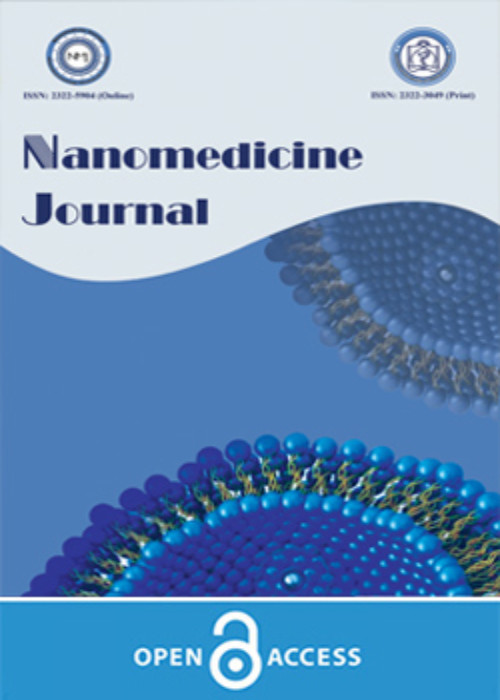Green synthesis and antibacterial activity of zinc selenide (ZnSe) nanoparticles
Author(s):
Article Type:
Research/Original Article (دارای رتبه معتبر)
Abstract:
Objective(s)
Drug delivery is an engineering technology to control the release and delivery of therapeutic agents to target organs, tissues, and cells. Metallic nanoparticles, such as gold nanoparticles (AuNPs) have exceptional properties which enable efficient drug transport into different cell types with reduced side effects and cytotoxicity to other tissues.Materials and Methods
AuNPs were synthesized by adopting the Turkevich method to reduce tetra chloroauric (III) acid (HAuCl4) solution with sodium citrate. A factorial design of 24 was used to investigate the influence of temperature, stirring speed, and the volume of citrate and gold salt on the size of AuNPs synthesis. The produced chemical-AuNPs (CN-AuNPs) were characterized using ultraviolet-visible spectroscopy and dynamic light scattering (DLS) which was conjugated with polyethylene glycol (PEG) loaded with chloroquine diphosphate. The latter were characterized with transmission electron microscopy (TEM), Energy dispersive x-ray spectroscopy (EDS), selected area electron diffraction (SAED) patterns and Fourier transmission infrared spectroscopy. The antimalarial activities of the three formulations were tested on Plasmodium-infected mice. Moreover, the evaluation of curative potentials of the formulations was carried out via parasite counts. The anemic and pathological conditions of nano-encapsulation were investigated for their cytotoxicity level. Results
The CN-AuNPs show surface plasmon resonance absorption ranging from 526 to 529 nm with smaller particle size at the lower citrate volume. The TEM image of CN-AuNPs with polyethylene glycol (PEG) and CN-AuNPs-PEG encapsulated with chloroquine diphosphate revealed spherical shape with EDS showing the appearance of gold (Au) at 2.0, 2.1, and 9.9 KeV. The SAED also revealed that the AuNPs were crystalline in nature. The in vitro time-dependent encapsulation release showed an extension of time release, compared to CN-AuNPs-PEG with parasitemia clearance at the same level of cytotoxicity. Conclusion
Therefore, although improved activity of the CN-AuNPs-PEG encapsulating was achieved but its cytotoxicity still is a limitation.Keywords:
Language:
English
Published:
Nanomedicine Journal, Volume:6 Issue: 4, Autumn 2019
Pages:
258 to 262
magiran.com/p2027631
دانلود و مطالعه متن این مقاله با یکی از روشهای زیر امکان پذیر است:
اشتراک شخصی
با عضویت و پرداخت آنلاین حق اشتراک یکساله به مبلغ 1,390,000ريال میتوانید 70 عنوان مطلب دانلود کنید!
اشتراک سازمانی
به کتابخانه دانشگاه یا محل کار خود پیشنهاد کنید تا اشتراک سازمانی این پایگاه را برای دسترسی نامحدود همه کاربران به متن مطالب تهیه نمایند!
توجه!
- حق عضویت دریافتی صرف حمایت از نشریات عضو و نگهداری، تکمیل و توسعه مگیران میشود.
- پرداخت حق اشتراک و دانلود مقالات اجازه بازنشر آن در سایر رسانههای چاپی و دیجیتال را به کاربر نمیدهد.
دسترسی سراسری کاربران دانشگاه پیام نور!
اعضای هیئت علمی و دانشجویان دانشگاه پیام نور در سراسر کشور، در صورت ثبت نام با ایمیل دانشگاهی، تا پایان فروردین ماه 1403 به مقالات سایت دسترسی خواهند داشت!
In order to view content subscription is required
Personal subscription
Subscribe magiran.com for 70 € euros via PayPal and download 70 articles during a year.
Organization subscription
Please contact us to subscribe your university or library for unlimited access!


